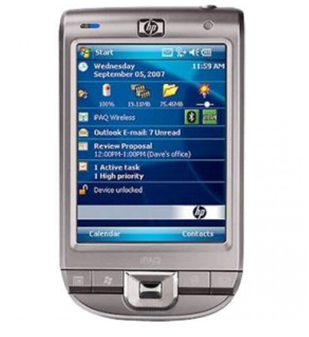personal digital assistant (PDA)
PersonalDigital Assistants(PDA) are small battery-powered handheld PCs without a keyboard. Input is made via the touch-sensitive touchscreen using a stylus or finger pressure. PDAs can be used as a mobile computing unit in conjunction with transmitting and receiving equipment, for example in the form of a PCMCIA card. The screen of most PDAs has a resolution that ranges from 170 x 220 pixels to 240 x 320 pixels.
As can be seen from the name Personal Digital Assistant, it is a personal information assistant with organizer functions that acts as a Personal Information Manager( PIM). Standard functions include address management, an appointment planner, a notebook, a simple word processor, a spreadsheet and possibly a presentation program. If the PDAs are upgraded to smartphones, the range of functions can be expanded to include voice communication, voice recognition, voice control, character recognition, MP3 player, HTML and smartphone browser, and the functions of an e-mail client.
If the communication takes place via a cell phone, the connection between the PDA assistant and the samrtphone can be realized via Bluetooth or by means of infrared light, according to the specifications of the Infrared Data Association( IrDA).
PDAs have special operating systems that support the application requirements and the technical equipment. These include PalmOS and its successor webOS, Windows CE and EPOC. With Hotsync, PDA data and programs can be synchronized with those on a personal computer. With the development of smartphones and tablet PCs, PDAs have become less important. The first PDA assistant was the Newton MessagePad developed by Apple in 1993, and one of the best known is the Palmtop.

